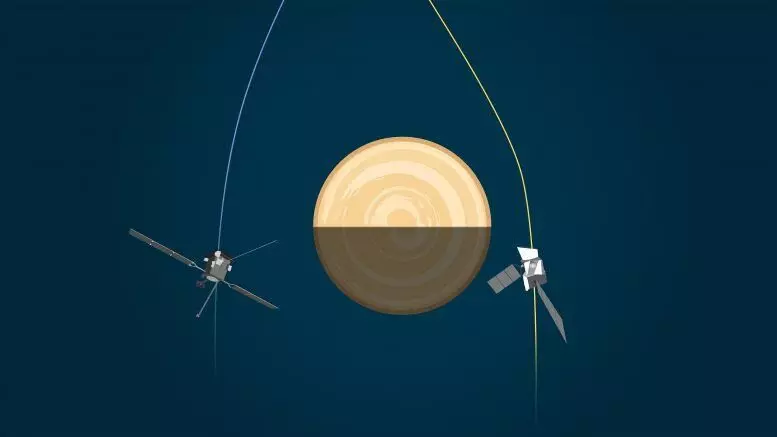
ESA, NASA spacecrafts set to make space history with double Venus flybys
text_fieldsParis: European Space Agency (ESA) and the US space Agency NASA spacecrafts, are set to make space history with two Venus flybys just 33 hours apart on Monday and Tuesday.
Solar Orbiter, a partnership between ESA and NASA, will fly by Venus on August 9 with a closest approach of 7995 km at 04:42 UTC, while BepiColombo, a partnership between ESA and Japan Aerospace Exploration Agency (JAXA), will fly by Venus at 13:48 UTC on August 10 at an altitude of just 550 km, the ESA said in a statement.
"The double flyby also offers an unprecedented opportunity to study the Venus environment from different locations at same time and, moreover, in locations that are not typically visited by a dedicated planetary orbiter," the ESA said.
Solar Orbiter, launched in February 2020 to study the Sun, made its first-ever flyby past Venus in December last year.
The Solar Orbiter's path around the Sun has been chosen to be "in resonance" with Venus, which means that it will return to the planet's vicinity every few orbits and can again use the planet's gravity to alter or tilt its orbit, the ESA said.
BepiColombo is on its way to the mysterious innermost planet of the solar system -- Mercury.
It needs flybys of Earth, Venus and Mercury itself, together with the spacecraft's solar electric propulsion system, to help steer into Mercury orbit against the immense gravitational pull of the Sun, the ESA said.
Meanwhile, the science cameras onboard either missions will not be able to take high-resolution imagery of Venus as Solar Orbiter must remain facing the Sun, while the main camera onboard BepiColombo is shielded by the transfer module that will deliver the two planetary orbiters to Mercury.
But, two monitoring cameras onboard BepiColombo will take photos at the time of close approach and in the days after as the planet fades from view, the ESA said.
Both spacecrafts have one more flyby this year -- BepiColombo in October and Solar Orbiter in November.
During the night of 1-2 October BepiColombo will see its destination for the first time, making its first of six flybys of Mercury -- with this one from just 200 km distance.
On 27 November, Solar Orbiter will make a final flyby of Earth at 460 km, kicking off the start of its main mission to perform unprecedented close-up observations of the Sun and provide the first images of the uncharted polar regions of the Sun.












